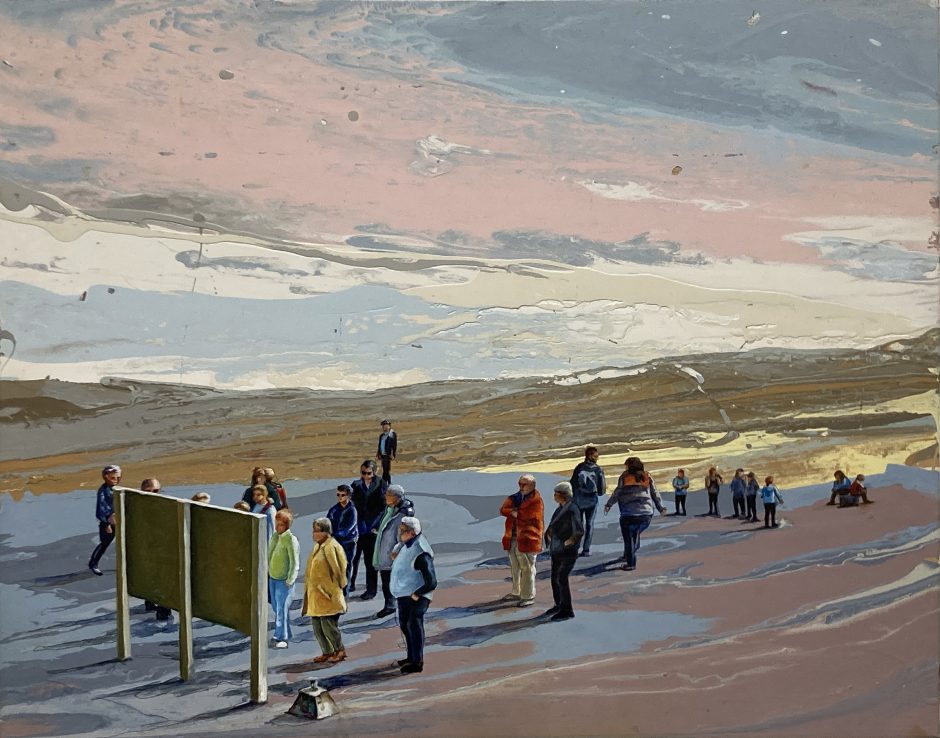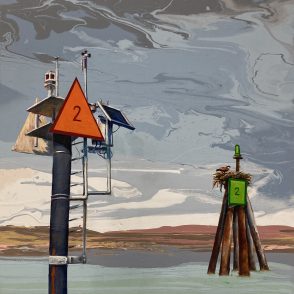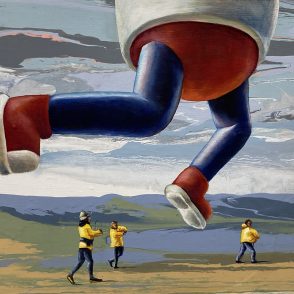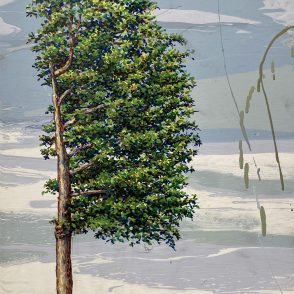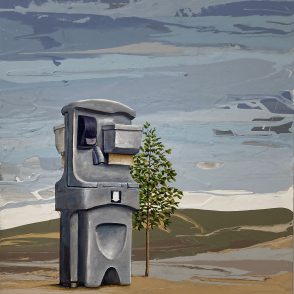Terrain Vague
.
We are pleased to announce the opening of Terrain Vague, a Groveland Gallery premiere by Northfield, Minnesota artist, David Lefkowitz. Lefkowitz, who serves as Professor of Art at Carleton College, has work in numerous collections in the U.S. and Europe, including the Walker Art Center in Minneapolis, the Langen Foundation in Neuss, Germany, and the Perez Museum of Art Miami.
Included in this exhibition will be a new series of pseudo-landscapes on panel. About this new work, Lefkowitz writes:
“This series of paintings depict invented views of ever-present but frequently overlooked segments of the landscapes we inhabit- empty lots, highway medians, abandoned industrial sites- non spaces without a name or a claim as property. The term ‘Terrain Vague’ was coined by Catalan architect Ignasi de Solà-Morales to draw attention to what usually goes unseen and encourage a reconsideration of our relationship to place.
Moving from background to foreground, the paintings all start with grounds of poured latex that mimic both organic topographic features and Modernist action process painting initiated by Jackson Pollock and extended by Morris Louis and others. The color palette suggests an image of the earth seen out an airplane window through atmospheric haze, and is made entirely of ‘mistinted’ paint abandoned at hardware stores. These grounds are meant to feel both arbitrary and inevitable, like one’s encounter of the layers of geologic history in a roadcut along a highway, or for that matter any fragment of the observed natural landscape. Yet, ironically, they are made out of the literal residue of an industrial process. Mechanically produced, organically applied.
Instead of emphasizing the flatness of the surface and the primacy of the material and act of application though, these layers serve as the literal ‘grounds’ for topographical or representational features. In this new series, there is a clear horizon plane in each painting. The viewer is situated at ground level, a near-universal landscape orientation.
The ‘figure’ or foregrounded layer consists of deadpan, aggressively yet clunkily literal depictions of ancillary features, both natural and human-made, of our surroundings- hedgerows, concrete barriers, traffic cones, utility structures – the type of elements basic to the infrastructure we rely on but never consider as worthy of contemplation.”
2.
